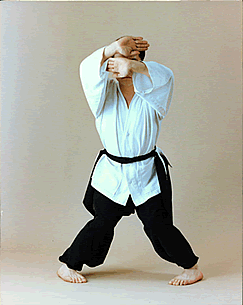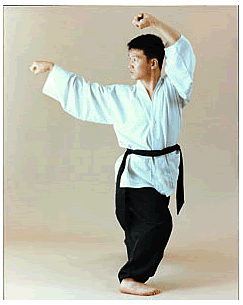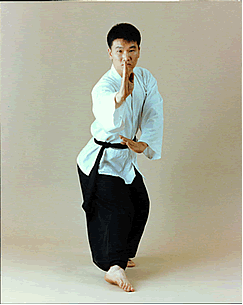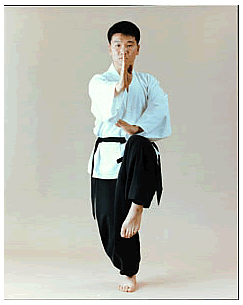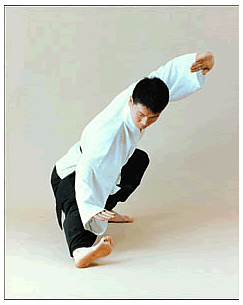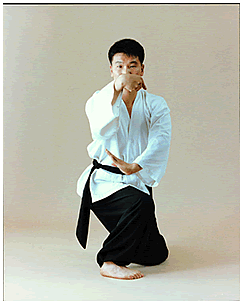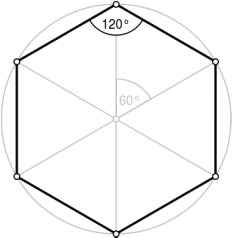6 Basic Poses
In most styles of meditation, practitioners learn a style of deep, abdominal breathing that can take months or years to execute perfectly. The purpose of the six basic poses of GiCheon, however, is to enable a person to achieve abdominal breathing naturally, without artificial efforts like thinking about breath or images or words. These six positions are called "YukHap DahnGong," literally translated as "Six Abdomen Disciplines Altogether" which are “NaeGa ShinJang”, “BeomDoh”, “SoDoh”, “DaeDoh”, “GeumGye DongNip” and “HeoGong” as below.
The abdominal breathing attained through GiCheon 6 basic poses opens and develops the Gi channels (twelve primary Gi channels and the eight Gi vessels) so that the energy can flow unrestricted. The Eum and Yang muscles (the inner and outer muscles respectively) of the body are also developed, which in turn helps the practitioner accumulate more Gi energy for self healing or healing or spiritual inner growth or internal power.
|
The meaning of number 6 & Hexagon
The fact that there are six basic positions in GiCheon is no accident. In oriental cultures, the numbers "six" and "three" are viewed as perfect numbers in accordance with the principles of nature. For example, while modern science holds that the basic components of the universe are the numerous elements that constitute the periodic chart, in ancient oriental philosophy there are three basic elements, the Heavens (or universe), the Earth, and the human being.
Why three? There's an inherent strength and stability, and, paradoxically, a mystical quality to the number three, perhaps best-illustrated by the secret of the pyramid. Like the number three, six (3x2) is also considered as the perfect number of the universe in oriental philosophy as illustrated by patterns seen in nature. The water molecule, for instance, (two hydrogen atoms, and one oxygen) is composed ofthree atoms, and when it takes on a hexagonal form, it is scientifically provento have numerous health benefits: water is not only good for our health, but accounts for more than 70 percent of the human body. In oriental astrology, predicting a person's destiny is based on the sexagenary cycle of the universe. The number six emerges in the great scheme of the universe, and thus it is a major theme in age-old oriental wisdom. Meanwhile, YukHap had meant three (3) dimensions in ancient Korean term. |

